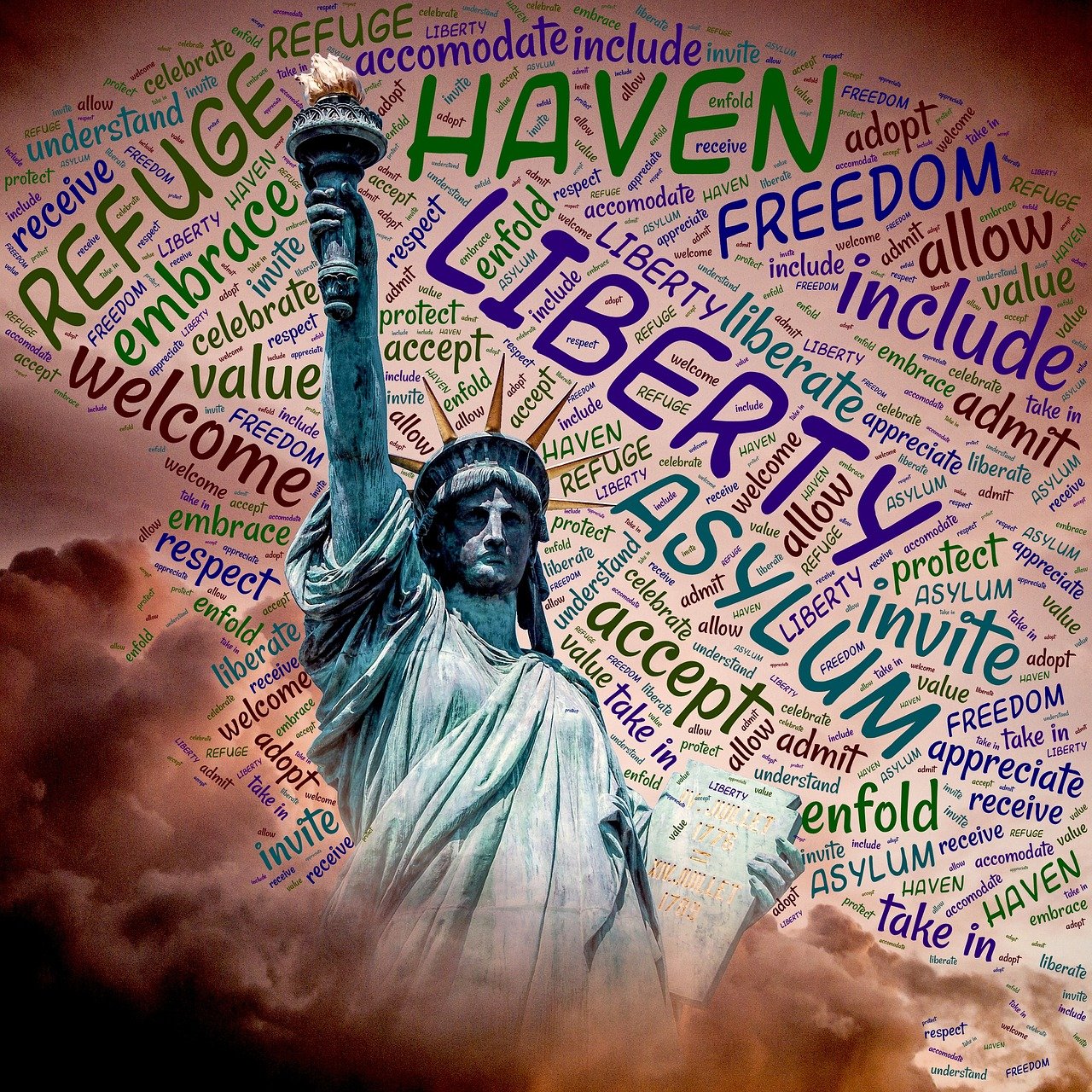Migration is a complex and often divisive topic, with passionate arguments on both sides. To navigate this issue, it’s helpful to understand it through a broader lens. Roland Kim’s Five-Stage Model of Civilization offers a framework for evaluating how societies evolve in their attitudes toward migration.
https://www.youtube.com/watch?v=tpXKcQJUUg0
Roland Kim’s Five-Stage Model of Civilization Overview:
- Stage 1 (Authoritarian-Dependent): Societies at this stage are heavily reliant on strong, often authoritarian structures. Fear and survival instincts dominate decision-making.
- Stage 2 (Competitive-Narcissistic): Societies begin to resist authority, focusing on competition and group dominance. The mentality here is often “us vs. them.”
- Stage 3 (Socio-dependent and Cooperative): Cooperation starts to emerge, but there’s still a firm reliance on group identity and cultural norms for stability.
- Stage 4 (Libertarian and Individualistic): Societies emphasize individual freedoms, focusing on rationality, rights, and democracy.
- Stage 5 (Collaborative and Actualizing): The highest level, where societies balance individual freedom with collective well-being through empathy, understanding, and collaboration.
Anti-Migration Perspective: Acknowledging Concerns and Seeking Balance
Stage 1: Fear and Protectionism
- Valid Concerns: Many people are concerned that immigration could destabilize their communities. They fear economic insecurity or cultural erosion, which are tied to real experiences of change in a rapidly globalizing world.
- Empathy and Understanding: These fears deserve thoughtful consideration. The need to protect what is familiar is a natural human response and should be approached with empathy rather than dismissal.
Stage 2: Competition and Conflict
- Legitimate Worries: The fear that migration might lead to competition for jobs and resources is a genuine concern, especially in economically vulnerable areas. This concern is grounded in the reality that resources can feel finite, leading to a mentality where the success of one group might seem to come at the expense of another.
- Constructive Solutions: Rather than seeing competition as insurmountable, we can explore how migration can be managed to benefit everyone. Policies supporting job creation and economic growth can help mitigate these concerns, allowing both immigrants and native citizens to thrive together.
Stage 3: Reliance on Cultural Norms
- Cultural Identity Matters: The desire to preserve cultural identity and heritage is powerful. For many, their cultural background is a source of pride and stability. The fear of losing this through immigration is very real and must be respected.
- Embracing Diversity: History shows that cultures are not static; they evolve through interaction. Migration can enrich our cultural tapestry, creating a society that honors its roots while welcoming new influences.
Pro-Migration Perspective: Moving Towards Collaboration and Inclusion
Stage 4: Individual Rights and Rationality
- Rights-Based Approach: The pro-migration perspective emphasizes individual rights and rational policies. Evidence shows that migrants can contribute positively to society, particularly when integration is well-supported.
- Real-Life Example: Germany’s response to the Syrian refugee crisis illustrates how a rights-based approach can balance humanitarian principles with practical integration efforts.
Stage 5: Empathy and Interdependence
- Collaboration for the Common Good: The pro-migration perspective seeks to create a society where empathy and interdependence are central. By promoting collaboration between immigrants and native citizens, we can build a stronger, more resilient community.
- Real-Life Example: Canada’s multiculturalism policy exemplifies how diversity can be embraced while fostering social cohesion. Canada has created a model where both immigrants and long-time residents can thrive.
Understanding Cultural Stages of Development: The Role of Spiritual and Religious Needs
When accepting immigrants, especially those from Stage 1 societies (where survival is a priority), it’s crucial to recognize their cultural, spiritual, and religious needs. In these societies, religion and spirituality are deeply intertwined with daily life and provide a sense of security. Ignoring these needs can lead to significant challenges in the integration process.
The Importance of Spiritual and Religious Needs in Stage 1 Societies
- Coping Mechanisms: In Stage 1 societies, religion and spirituality offer comfort and order in unstable environments. For immigrants from such backgrounds, religious practices are essential coping mechanisms as they navigate the uncertainties of life in a new country.
- Real-Life Example: A 2015 study by the Migration Policy Institute found that religious institutions are critical for newly arrived refugees in the U.S., offering spiritual and practical support.
Challenges of Ignoring Cultural and Spiritual Needs
- Alienation and Conflict: If a host society fails to recognize these needs, immigrants may feel alienated, leading to difficulties in integration and potential social tension.
- Real-Life Example: The debate in France over religious symbols, particularly the hijab, highlights the challenges that arise when cultural and religious needs are not adequately addressed. For many Muslim immigrants, the hijab is a deeply held religious practice, and the lack of accommodation for this spiritual need has led to feelings of exclusion.
A Holistic Approach to Integration
- Cultural Sensitivity Training: Public service providers, including educators and healthcare workers, should receive training to understand and respect immigrants’ cultural and religious backgrounds.
- Inclusive Policies: Implement policies that allow immigrants to practice their religion freely while ensuring these practices align with the host society’s broader values.
- Community Engagement: Encourage dialogue between immigrant communities and the broader society to build mutual understanding and respect.
Finding Common Ground: A Path Forward
Acknowledging Genuine Concerns: It’s vital to recognize that both sides of the migration debate have legitimate concerns. Issues like economic security, cultural identity, and social stability are fundamental to our well-being as individuals and as a society. We can create a more constructive dialogue by addressing these concerns with empathy.
Encouraging Constructive Engagement: This blog is not meant to dismiss any viewpoint but to open a space for dialogue where all voices can be heard. I encourage readers from all perspectives to share their thoughts and experiences. By engaging in respectful discussions, we can find solutions that benefit everyone.
Emphasizing Shared Values: At the heart of the migration debate are values that unite us—safety, prosperity, and a cohesive society. We all want to live in communities where we feel secure, have opportunities to succeed and connect with others in meaningful ways. By focusing on these shared values, we can transcend divisions and build a society that is both inclusive and strong.
The Need for Empathy and Understanding: As we continue to welcome immigrants from diverse backgrounds, it’s essential to recognize the cultural stages of development they bring with them, including their spiritual and religious needs. Understanding and respecting these needs can create a more inclusive and supportive environment that helps immigrants thrive and enriches the host society. This approach aligns with the higher stages of socio-cultural development and reflects our shared values of empathy, collaboration, and mutual respect.
A Call to Action: Let’s move forward with empathy, collaboration, and a commitment to our shared values. Together, we can create a society where everyone, regardless of their background, has the opportunity to contribute and thrive. This is not just a possibility; it’s a necessity for building a mature, inclusive, and prosperous future.
Questions for Reflection:
- How can we balance the need for cultural preservation with the benefits of cultural diversity?
- What policies or programs have you seen that successfully integrate immigrants while respecting their cultural and religious needs?
- How can we foster dialogue between different communities to build a more inclusive society?








